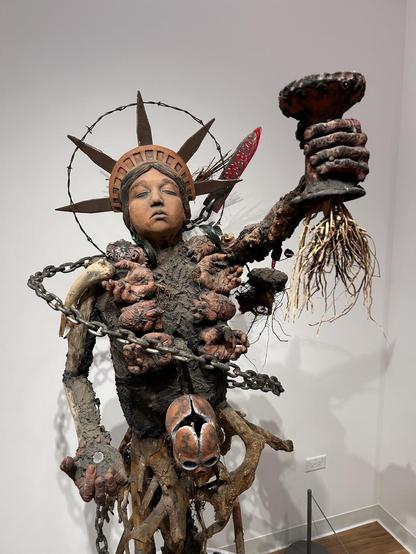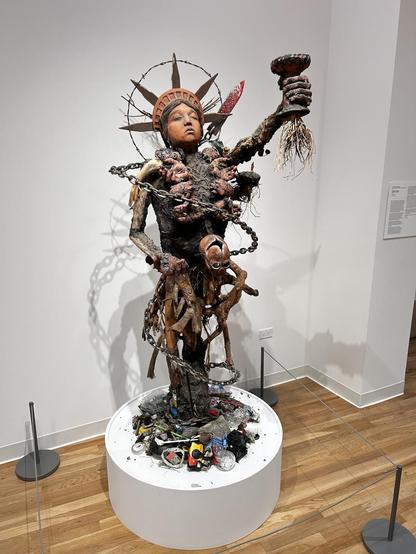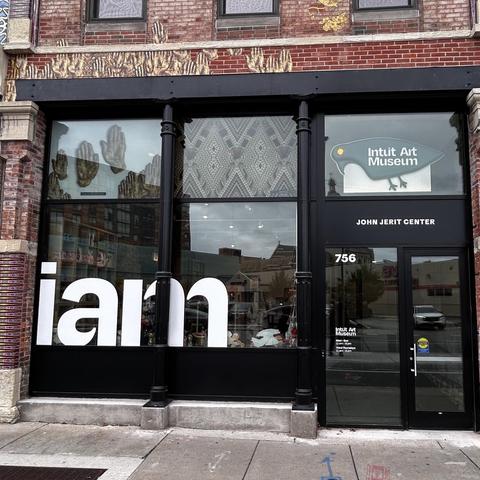2025-12-10 17:19:22
When "self-driving" cars were first getting some hype back in ~2015 or so, I told people who asked me that I didn't think they'd be safe, and that I wished the same money were being invested in driver-assistance systems instead.
At the time, advocates were claiming that self-driving cars would be safer than human drivers.
We now have both self-driving cars and some nifty new driver assistance things, and it turns out that the self-driving cars are in fact being developed by corporations whose attention to the bottom line results in danger to others on the road pretty regularly. I don't actually have stats here for whether they're "safer than human drivers" or not, but the opportunity for one bad software update to make *all* self-driving cars dangerous at once kinda makes me doubt that.
Here's an example of Waymo cars getting "more aggressive" as they try to balance between being too timid and obstructing traffic (including emergency vehicles) and being too dangerous:
https://archive.ph/JJuGv
Here's another example of passing stopped schoolbusses leading to a software recall:
https://abcnews.go.com/GMA/News/waymo-issue-voluntary-software-recall-after-close-calls/story?id=128207776
In the first article, Waymo claims 91% fewer serious accidents per mile. Obviously an independent audit would be actually trustworthy, but even if we take that claim at face value, it's meaningless if an update tomorrow causes 100,000 accidents.
Note that they could be using better engineering practices, and the fact that they aren't shows that they don't care enough about the risks. They could be deploying new software versions incrementally and slowly, letting new versions rack up lots of miles only on a few vehicles before pushing them to a fleet. The should also have the equivalent of a simulation unit test for "schoolbus is stopped, what do?" and if a software version fails that test, it doesn't make it to the fleet. Clearly they don't have that.
I feel pretty vindicated in my earlier prediction that this tech is a bad idea in the hands of the current advocates.
2026-01-09 21:07:32
The thing that Renee Good now knows, that Tortuguita knows, that Heather Heyer knows, that I only know because I glimpsed for a second, is that when you die fighting oppression you live forever in that memory of resistance. When we carve their names into a monument, along with all the other names of the murdered and disappeared, that will stand, perhaps, across from the statue of Willem in the park where the Northwest Detention Center once stood, they will always be reminders of what it looks like to sacrifice everything in order to be on the right side of history.
The names of those who resist live as ghosts, summoned by name to haunt future oppressors, summoned by name to awaken our own conscience to the call. Martyrs, whispered like the White Rose or yelled as a threat like John Brown, cannot die so long as any of us with a bit of spine carries even an ounce of humanity.
It is possible to die knowing you did the right thing, and I have felt it. There is an acceptance that is impossible to imagine without being there, without feeling it for yourself. You have nothing to fear in resisting, even if it ends you. But you will never forget the shame of doing nothing if you fail to.
2025-11-09 21:49:51
2025-11-09 21:57:39
En Nombre del Progreso (In the Name of Progress)
2017 by Alfonso "Piloto" Nieves Ruiz, active in the United States, born Querétaro, Mexico. at Intuit Art Museum, West Town, #Chicago
2025-11-10 10:14:30
« L’extrême droite, en promettant tout Š tout le monde, voudrait faire oublier la violence de son programme : le rejet des “ennemis de l’intérieur” »
https://www.lem…
2025-12-11 14:50:03
The thing about "AI summaries" on YouTube videos that I really don't understand is: it's basically spoilers for the video and now I don't want to watch it anymore.
Is that really what they want people to do on that site? Deliberately adding a feature that's expensive to run and that reduces engagement?
2025-12-11 17:25:54
Because #accessibility is out of scope for Baseline, devs may not know how poorly supported a feature is and miss an opportunity to vote for things that are barriers to users and risks to orgs.
“Vote for the web features you want to see”
https://
2026-01-11 18:20:33
Instagram says there was no breach and it fixed an issue that let an external party send password reset emails, after reports that 17.5M users' data was exposed (Terrence O'Brien/The Verge)
https://www.theverge.com/news/860337/instagram-fixed-password-reset…
2025-10-11 11:44:24
Day 18: Mark Oshiro
Having just learned that Oshiro is nonbinary, they're an instant include on this list. In veering extremely heavily towards YA, and losing a spot that would have gone to an absolutely legendary mangaka, anime writer, or feminist philosopher, but "Anger is A Gift" and "Each of us a Desert" are just that good, and I'm trying to steer a bit towards towards lesser-known authors I respect.
I already mentioned "Anger is a Gift" above, but to recap, it's a painful, vivid, and beautifully honest story of queer love, loss, and protest against an oppressive system. CW for racist police murder, intergenerational trauma, and police brutality against highschool students. It's a book a lot of Americans could benefit from reading right now, and while it's fiction, it's not fantasy or sci-fi. Besides the themes and politics, the writing is just really solid, with delicate characterization and tight-plotted developments that are beautifully paced.
To me "Each of us a Desert" is maybe even more beautiful, and Oshiro leaps into a magnificent fantasy world that's richly original in its desolation, dark history, lonely characters, and mythical magic. Particularly the clearly-not-just-superscription but ambiguously-important/powerful magical elements of Oshiro's worldbuilding are a rare contrast to the usual magic-is-real-here's-how-it-works fare, and pulling that off a all as they do is a testament to their craft. The prose is wonderful, probably especially so if you speak Spanish, but I enjoyed it immensely despite only knowing a few words here and there. The rich interiority of the characters, their conflicts both with each other and within themselves, and the juxtaposition of all that against origins in cult-like ignorance allows for the delivery of a lot of wisdom and complex truths.
Between these two books, so different and yet each so powerful, Oshiro has demonstrated incredible craft and also a wide range of styles, so I'm definitely excited to read more of their work and to recommend them to others.
I'm also glad to have finally put a nonbinary author on this list; the others I had in mind won't make it at this point because there's too much genre overlap, although I'll include them in my didn't-make-it list at the end. I've now got just 2 slots left and have counted up 14 more authors that absolutely need to be mentioned, so we'll see what happens.
#20AuthorsNoMen
2025-11-10 17:21:23
I have WCAG shirts for sale.
One that moves the “Punch Nazis” to the same line (this one’s new), but available in white on whatever and black on whatever.
And two variations of the MASH logo (yellow or black text).
Get them as weird holiday gifts!
https://aardrian.threadless.com/collec








